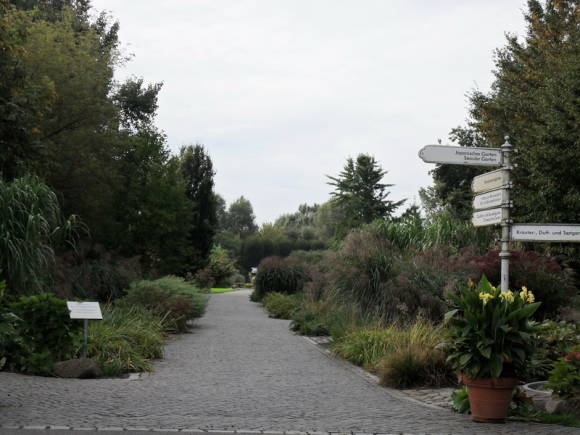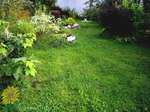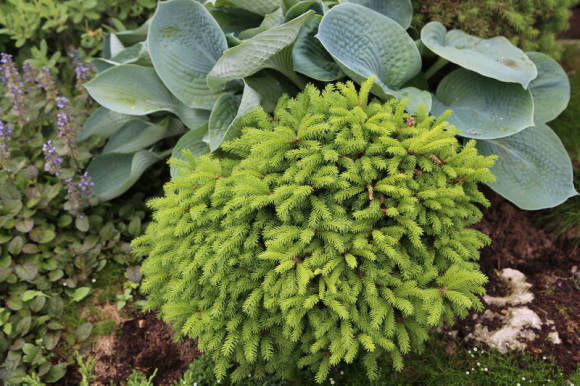 Regular gardens emerged at the dawn of civilization. Their appearance, obviously, is associated with the eternal desire of man to organize and subjugate the surrounding nature, to emphasize his superiority over it. Already the ancient Egyptian pharaohs laid out gardens of regular shape around their palaces with rectangular reservoirs, straight alleys and symmetrically located groups of trees. In the era of antiquity, this tradition was continued. The parks of ancient Roman country villas were arranged as regular gardens with clipped trees and shrubs, fountains and other gardening ideas that became so widespread already in the Renaissance. It is to this era that the masterpieces of the regular style belong.
Regular gardens emerged at the dawn of civilization. Their appearance, obviously, is associated with the eternal desire of man to organize and subjugate the surrounding nature, to emphasize his superiority over it. Already the ancient Egyptian pharaohs laid out gardens of regular shape around their palaces with rectangular reservoirs, straight alleys and symmetrically located groups of trees. In the era of antiquity, this tradition was continued. The parks of ancient Roman country villas were arranged as regular gardens with clipped trees and shrubs, fountains and other gardening ideas that became so widespread already in the Renaissance. It is to this era that the masterpieces of the regular style belong.
The triumph of reason over nature
In those days, the garden was a single whole with the palace. Closed "green offices and halls" built by skilled gardeners from trimmed trees and shrubs - holly, boxwood, laurel, linden or hornbeam - served as a continuation of the palace's open-air rooms. The palace itself was located at the base of the symmetry axis of the entire park ensemble and, as a rule, at its highest point. The palace and park embodied the idea of man's elevation above nature, the achievement of absolute perfection of the artificial, orderly environment created by the artist.
Images of a baroque garden
 The regular baroque gardens were of a lush, ceremonial character. The frozen rows of sheared yews and thujas greeted the owner and his guests, the patterned parterre flower beds resembled spread velvet carpets with intricate boxwood borders and bright spots of flowers. Single sculptures and multi-figured sculptural groups led the visitor along the paths of the park. The water filled the baroque parks with freshness and movement. Obeying the genius of the architect, she serenely rested, flowed, overthrown from numerous fountains and cascades.
The regular baroque gardens were of a lush, ceremonial character. The frozen rows of sheared yews and thujas greeted the owner and his guests, the patterned parterre flower beds resembled spread velvet carpets with intricate boxwood borders and bright spots of flowers. Single sculptures and multi-figured sculptural groups led the visitor along the paths of the park. The water filled the baroque parks with freshness and movement. Obeying the genius of the architect, she serenely rested, flowed, overthrown from numerous fountains and cascades.
Baroque gardens were often used for a variety of pleasures. They hosted theatrical performances, masquerades, fireworks. And what scenes took place in secluded "green halls" in the era of the gallant age, we can only guess!
New trends
With the passing of the gallant age, the era of regular parks ended. The landscape style, as more democratic and cheaper, has replaced the regular one. But the very idea of a solemn symmetrical decoration of the front part of the estate is still very attractive. Modern landscape architects are trying to use the principle of regularity in the design of individual fragments of a garden plot. Most often, the front garden area, directly adjacent to the house, is solved in a regular style. Here, paths are laid from tiles, artificial or natural stone, decorative concrete. A carefully mown green lawn surrounds the flowerbeds of the regular geometric shape. In this part of the garden, low shrubs are planted, which retain their growth shape well or easily tolerate formative pruning - spireas, barberries, hawthorns, boxwood, undersized forms of mock-mushrooms.
Low borders in central Russia can be made from boxwood. Although it is generally believed that this shrub is more suitable for the southern regions, it also feels decent in the middle lane. True, above the level of snow cover, boxwood freezes a lot, but after pruning it looks quite good. It is very important that the boxwood border is evergreen, pleasing to the eye from early spring to late autumn.


Some of the low-growing Thunberg barberry varieties, Atropurpurea Nana and Bagatelle, also produce cute borders. Atropurpurea Nana is a dwarf shrub with a spherical crown 40-60 cm in diameter. Its leaves are small, ovoid, deep purple in color. Bagatelle reaches about the same size, but its leaves have different shades.Young leaves are dark pink, the older ones located inside the bush are green with a purple bloom.
For taller "green fences" in the regular part of the garden, the brilliant cotoneaster is ideal. This shrub in nature reaches 3 meters, and in culture it can be given the desired height by regular pruning. After pruning, cotoneaster shoots grow well, pleasing the eye with shiny, as if varnished, dark green leaves.
Of the trees in the regular part of the garden, linden is most often planted, which was so loved both in Russian estates and in French regular parks. But cutting the crown of a tree, achieving a ball effect, is not the most interesting thing. Therefore, it is easier to plant a spherical willow tree that retains its ideal shape without any care from the gardener. Various decorative forms of thuja, among which there are both spherical and columnar, correspond well to the style of a regular garden, but the berry yew, which is so popular in regular gardens in Europe, is in no way suitable for the climate of central Russia. Here he eats out a miserable existence and is unlikely to serve as a garden decoration.






